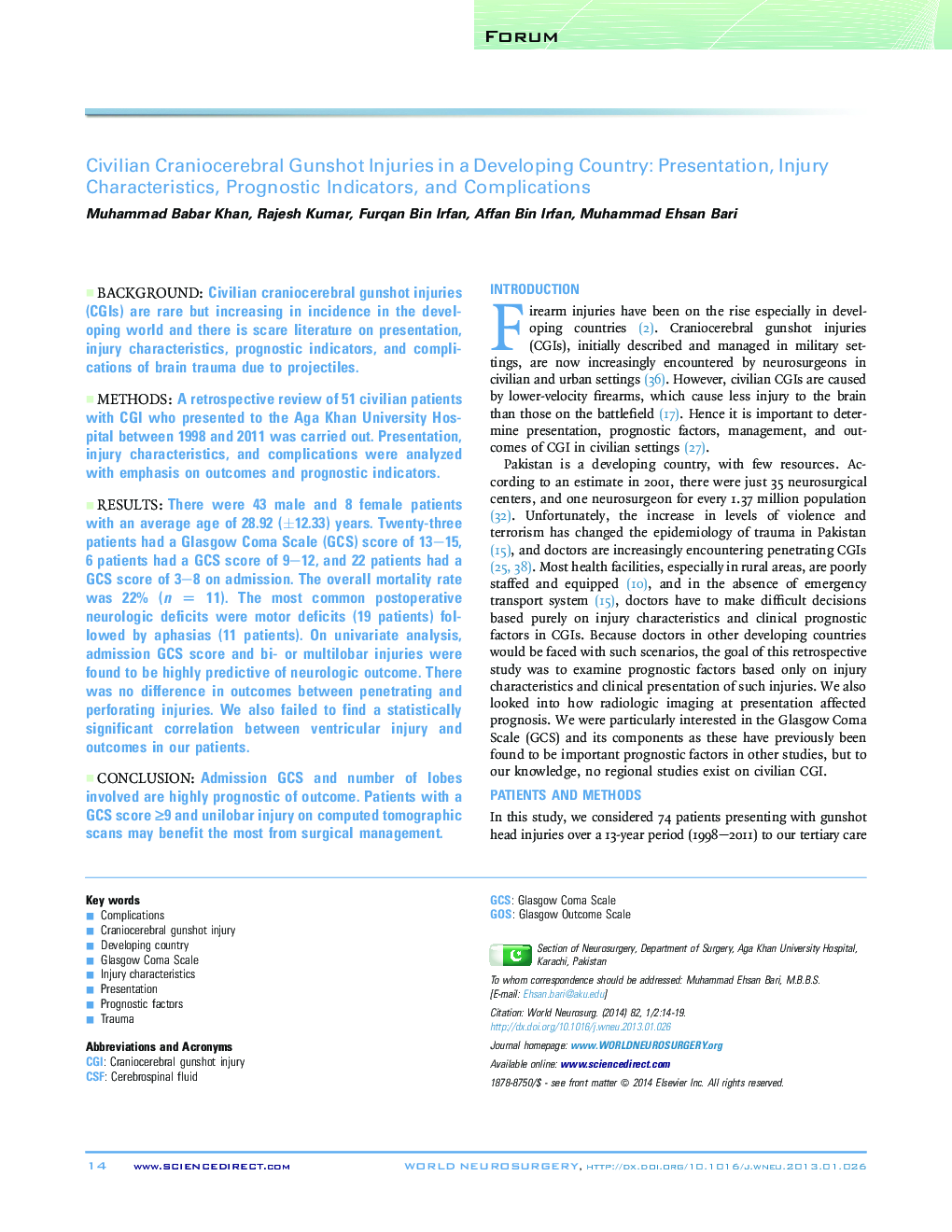| Article ID | Journal | Published Year | Pages | File Type |
|---|---|---|---|---|
| 3095514 | World Neurosurgery | 2014 | 6 Pages |
BackgroundCivilian craniocerebral gunshot injuries (CGIs) are rare but increasing in incidence in the developing world and there is scare literature on presentation, injury characteristics, prognostic indicators, and complications of brain trauma due to projectiles.MethodsA retrospective review of 51 civilian patients with CGI who presented to the Aga Khan University Hospital between 1998 and 2011 was carried out. Presentation, injury characteristics, and complications were analyzed with emphasis on outcomes and prognostic indicators.ResultsThere were 43 male and 8 female patients with an average age of 28.92 (±12.33) years. Twenty-three patients had a Glasgow Coma Scale (GCS) score of 13–15, 6 patients had a GCS score of 9–12, and 22 patients had a GCS score of 3–8 on admission. The overall mortality rate was 22% (n = 11). The most common postoperative neurologic deficits were motor deficits (19 patients) followed by aphasias (11 patients). On univariate analysis, admission GCS score and bi- or multilobar injuries were found to be highly predictive of neurologic outcome. There was no difference in outcomes between penetrating and perforating injuries. We also failed to find a statistically significant correlation between ventricular injury and outcomes in our patients.ConclusionAdmission GCS and number of lobes involved are highly prognostic of outcome. Patients with a GCS score ≥9 and unilobar injury on computed tomographic scans may benefit the most from surgical management.
